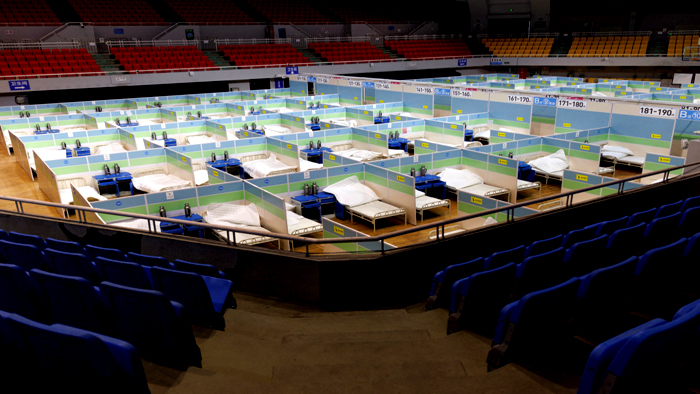As the number of COVID cases rises, people around the world are worried.

On Tuesday, cities all over China rushed to set up hospital beds and fever screening clinics after the US said Beijing’s sudden decision to let the virus run free was a worry for the whole world.
China started taking down its strict “zero-COVID” regime of mass lockdowns this month. This was done in response to protests against the restrictions that had kept the virus at bay for three years, but at great cost to society and the world’s second-largest economy.
Now that the virus is spreading through a country with 1.4 billion people who haven’t been exposed to it for so long that they don’t have natural immunity, there is growing concern about deaths, virus mutations, and the effects on the economy and trade.
Related: Asian stocks fall along with the dollar because the Fed is becoming more aggressive and China’s COVID is worried.
“We know that any time the virus is spreading and out in the wild, it has the potential to change and become a threat to everyone,” U.S. State Department spokesperson Ned Price said on Monday. He also said that the virus outbreak in China was a worry for global growth.
Five people died in Beijing on Tuesday because of COVID. Two people died on Monday, which was the first time deaths had been reported in weeks. China has only reported 5,242 COVID deaths since the pandemic started in the city of Wuhan in the centre of the country in late 2019. This is a very low number compared to the rest of the world.
But there are more and more doubts that the numbers show the full impact of a disease that is spreading through cities. This is because China dropped most of its restrictions, including most of its mandatory testing, on December 7.
Since then, some hospitals have been overrun, pharmacies have run out of medicine, and many people have locked themselves in, which has put a strain on delivery services.
“It’s a bit of a hassle to suddenly reopen when the supply of medicines wasn’t ready,” said Zhang, a 31-year-old delivery worker in Beijing who didn’t want to give his full name. “But I am in favour of reopening.”
Some health experts say that 10% of the world’s population, or 60% of China’s population, could get sick in the next few months, and that more than 2 million people could die.
In Beijing, the capital, there were security guards at the entrance of a COVID-19 crematorium. On Saturday, Reuters reporters saw a long line of hearses and workers in hazmat suits carrying the dead inside. Reuters wasn’t able to figure out if the deaths were caused by COVID.
‘GETTING SICK’
In Beijing, which has become the main place where people are getting sick, people are back on the trains to work, and the streets are getting busy again after being mostly empty last week.
Shanghai’s COVID transmission rates are catching up to Beijing’s, so the streets were less crowded and the subway was only half full.
“People aren’t coming because they are sick or afraid of getting sick, but I think most of them are sick now,” said Yang, a trainer at a Shanghai gym that was almost empty.
In recent weeks, top health officials have changed their message about how dangerous the disease is. Before, they said that the virus had to be wiped out to save lives, even though the rest of the world was opening up.
They have also played down the idea that the Omicron strain, which is now the most common, could become more dangerous.
Zhang Wenhong, a well-known infectious disease expert, said at a forum on Sunday, as reported by state media, that the chance of a sudden, large mutation is “very low.”
Still, there are more and more signs that the virus is shaking up China’s already weak health system.
The state-run Global Times reported on Monday that cities are stepping up their efforts to build more intensive care units and other facilities for people with severe COVID.
Also, the government has been in a hurry to build so-called “fever clinics,” which are places where doctors check on patients’ symptoms and give them medicine. The clinics are common in mainland China. They are often attached to hospitals and are meant to stop the spread of contagious diseases in hospitals.
In the past week, Beijing, Shanghai, Chengdu, and Wenzhou, all of which are big cities, said they had added hundreds of fever clinics, some of which are in old sports facilities.
China’s economy is also being hurt by the virus. It is expected to grow by only 3% this year, which is the worst growth rate in almost 50 years. Economists say that sick workers and truck drivers slow down production and mess up logistics.
Related: COVID slows growth in China’s factory and retail sectors.
On Monday, a survey by World Economics showed that business confidence in China dropped in December to its lowest level since January 2013.
Less industrial activity in the country that imports the most oil in the world has kept crude prices from going up and sent copper prices down.
Tuesday was the fourth month in a row that China didn’t change its benchmark lending interest rates.





